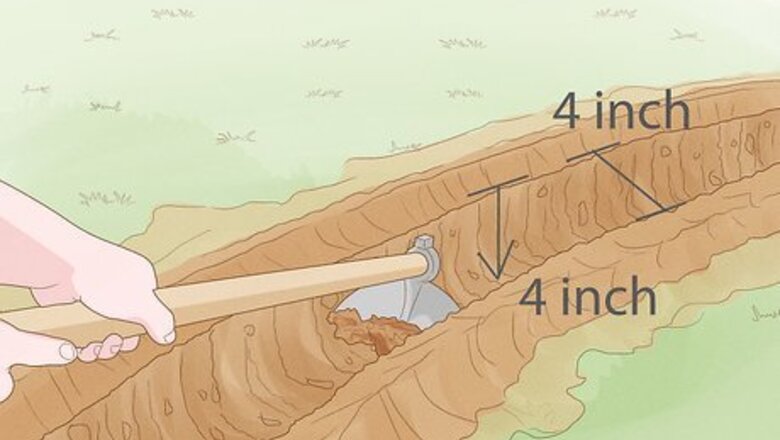
views
Trench Edging
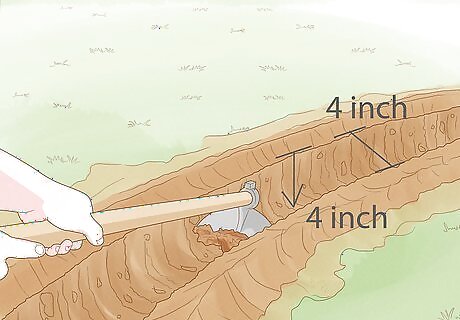
Dig a 4 by 4 in (10 by 10 cm) trench around the edge of your garden. Use a half-moon edger to define the line around your garden or your flower bed. Then, grab a shovel and dig the grass out so you have a large, wide trench around your entire garden or flower bed. The trench will create an air barrier so the grass roots can’t hop over from your lawn to your garden or flower beds.
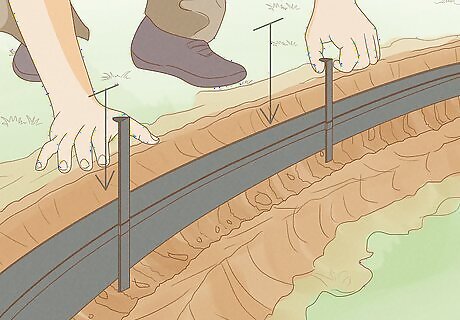
Line the trench with steel edging. Purchase a length of steel edging from your local garden supply store, and make sure it’s at least as long as your trench. Slide the steel edging into your trench, then pound it down until it’s flush with the surface of your garden or flower bed. Steel edging is thin, so it will bend to fit the curve of your trench. The steel edging will provide one extra layer between your grassy lawn and your flower beds. Since grass roots can’t dig down very deep, they won’t be able to go underneath the steel. You can buy a few pieces of steel to cover your entire trench if you need to. Overlap them just slightly to provide coverage throughout the entire trench. You can also use fiberglass or plastic edging instead of steel.
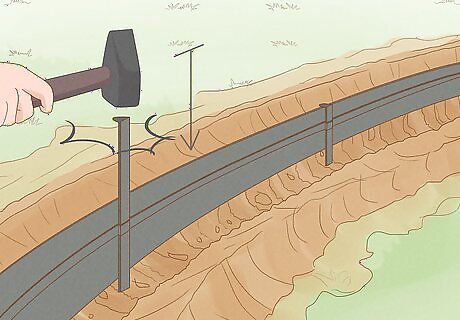
Pound stakes into the steel to keep it in place. Take a look at your steel edging and find the small slots that are spaced out every 4 feet (1.2 m) or so. Line up a steel stake with a slot in the edging, then use a mallet to hammer it in place. Add stakes to every slot to make sure the steel stays put. Depending on where you get them, the stakes might come with your steel edging or you might have to buy them separately. Some steel edging comes with spikes on the bottom that pound into the ground, in which case you won’t need any additional stakes.
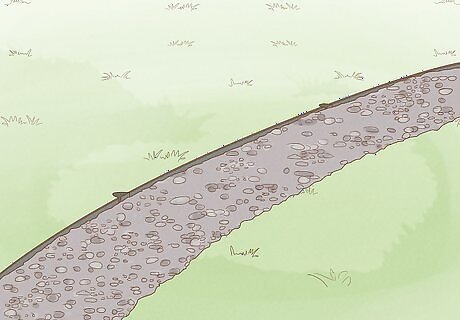
Cover the steel with stones to make it look attractive. Leaving the trench in place, use gardening stones or bricks to camouflage your steel edging and create a nice border around your garden or flower beds. The stones will also help prevent grass from popping up right next to your trench, so they’re not just for show! You can find white, gray, or red stones at most garden supply stores.
Mulching
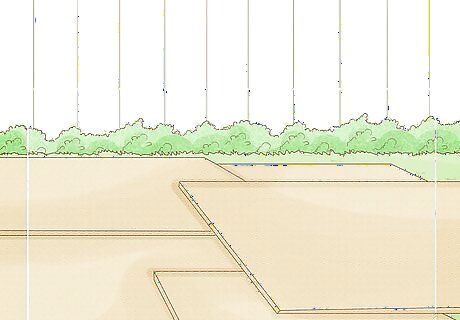
Cover the area with cardboard or newspaper. Make sure there aren’t any gaps in between your materials to ensure the grass can’t grow upwards. This will block the grass from getting any sun so it’s harder for it to grow. If you’re removing grass to grow plants or crops, put down a layer of compost first. This will feed the soil so it’s rich and healthy when you go to use it. If you’re covering a large area, mow the grass down as short as possible first.
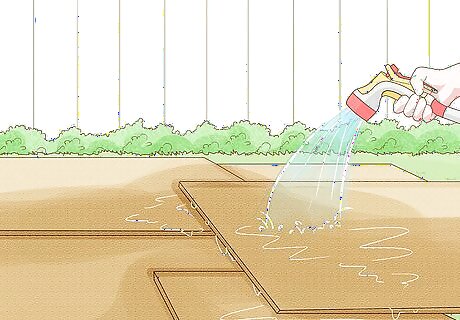
Water the cardboard or newspaper. You want your material to be really soggy. Grab a hose and wet down your cardboard or newspaper until it’s just about to fall apart. The goal is to get the cardboard or newspaper to break down over time. The wetter it is to start, the easier it will be.
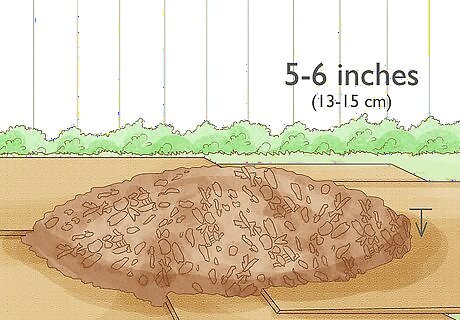
Cover the cardboard with 5 to 6 inches (13 to 15 cm) of mulch. Use dark bark mulch to prevent any light from going through to the grass. Cover the entire area until you can’t see the cardboard or the newspaper anymore. The mulch will help compact the material underneath so it breaks down faster.
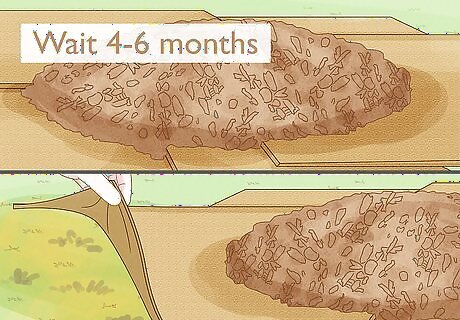
Wait for 4 to 6 months. Over time, the cardboard or the newspaper will break apart and mulch itself into the soil underneath. After 4 to 6 months, the grass will be dead and you’ll be left with rich, healthy soil underneath. If you see any grass pop up through the mulch while you’re waiting, trim it or pull it by hand as soon as possible. The younger it is, the easier it will be to kill.
Heat from the Sun
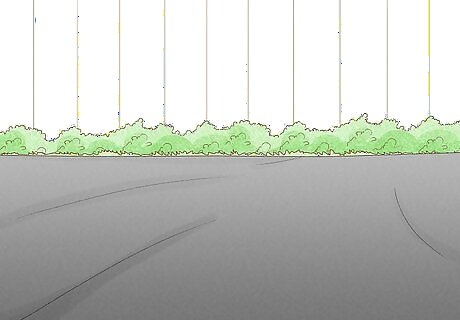
Cover the area with black plastic or a sheet of glass. Both plastic and glass will heat up when the sun hits them, making them super hot. Spread your sheet glass or plastic out over the area you want to kill or prevent grass. If you’re using plastic, secure the edges with large rocks or bricks to make sure it doesn’t fly away. If there are any other plants in the area that you want to save, don’t cover them with plastic or glass. This is a good method to use for grass between pavers or in flower beds. Cut your plastic down to fit the dimensions you need, then add it to the area. If you’re covering a large area of grass, mow it down as short as possible first.
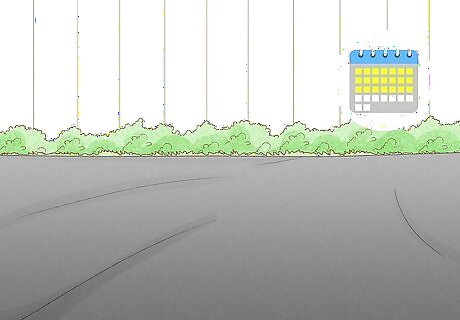
Leave the covers in place for 2 to 3 weeks. As the sun heats up your materials, it will fry the ground, killing the grass or the grass roots. After a few weeks, you can lift up your plastic or glass to see what the ground underneath looks like. If you had existing grass in the area, it will turn brown as it dies. If you were working with a dirt patch, it will probably be brown and dusty.
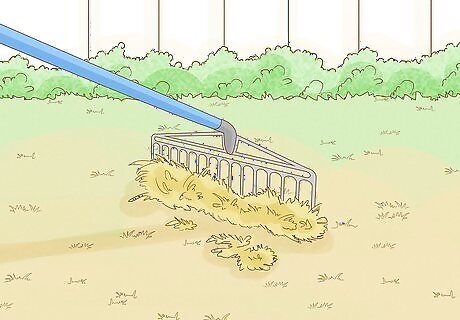
Rake up the dead grass. Once the grass is dead, it will come out of the ground easily. Grab a rake and get rid of all the grass, then enjoy the empty space in your yard! If the grass comes back, you can cover it up again with glass or plastic to kill it.
Herbicides
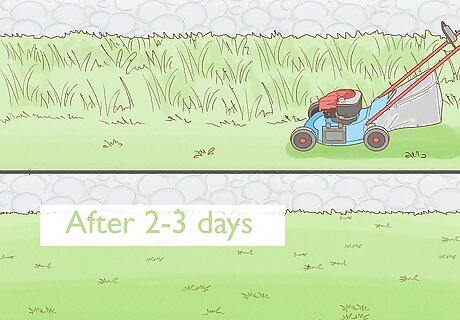
Wait 2 to 3 days after mowing your lawn. Plants absorb herbicides through their leaves, not their roots. If you’ve just mowed your lawn, wait for a few days so your grass can get a little taller before you apply your herbicides. Using herbicides on a short lawn won’t work as well, since there is less plant material to absorb the chemicals.
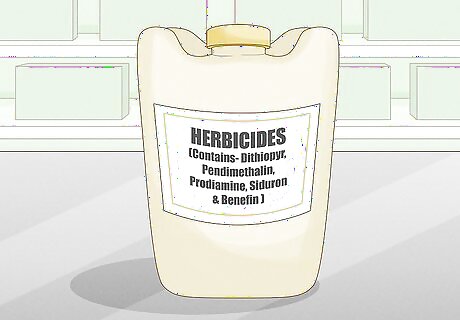
Purchase an herbicide for grassy weeds from a garden supply store. Look for the ingredients dithiopyr, pendimethalin, prodiamine, siduron, and benefin to ensure the herbicide is good for grass and grassy weeds. Buy a liquid herbicide if you don’t want to worry about mixing your own, or get a granular one if you’d like to control how much you make at one time. If you aren’t a fan of chemical herbicides, look for natural ones that contain vinegar, cloves, cinnamon, rosemary, d-limonene, or iron. Natural herbicides aren’t as effective as chemical ones, but they are less harmful to the plants around your grass.
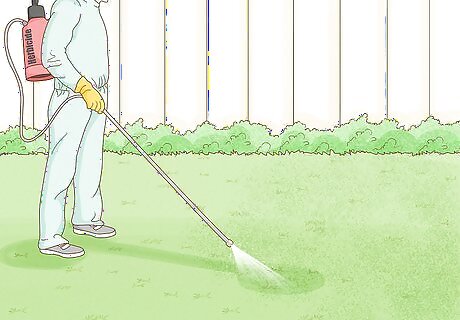
Put on gloves, then spray the herbicide on your grass. Attach a nozzle to your herbicide container and put the tip close to the ground. Wave the nozzle slowly back and forth over the grass, spraying just enough to wet the leaves. You can kill small areas of grass by sticking your nozzle in between plants and spraying just the grass. This works great for flower beds and grass that’s growing in between pavers, but it’s not a good idea to use herbicides around food in a garden. If the winds in your area are stronger than 5 mph (8 km/h), don’t spray your herbicides. The wind can catch the small droplets in the air and spread them to other parts of your lawn. If it’s hotter than 85 °F (29 °C) outside, don’t spray your herbicide. The chemicals will evaporate in the heat before they have time to penetrate the grass.
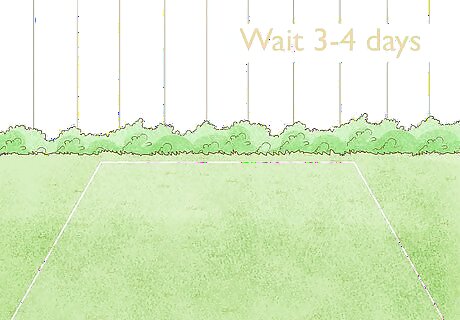
Wait 3 to 4 days before mowing your lawn again. The herbicides need time to absorb before you mow your lawn. If you can, wait a few days before you do any lawn care to give the herbicides time. Keep small children and animals away from the herbicides until they’re fully dry.
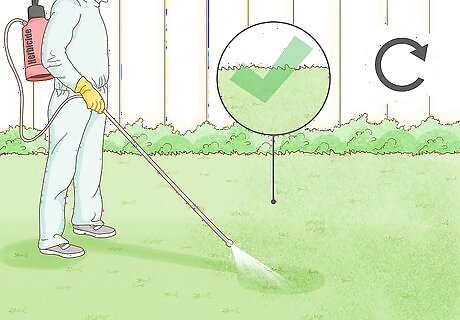
Spray the grass again if it’s not dead by the end of the season. Some grass is so hearty that it might need a second application. If your grass is still alive after a couple of months, read the label on the back of your herbicide to see how soon you can do another application. Every herbicide is slightly different, so you should always check your label before spraying a second time.




















Comments
0 comment